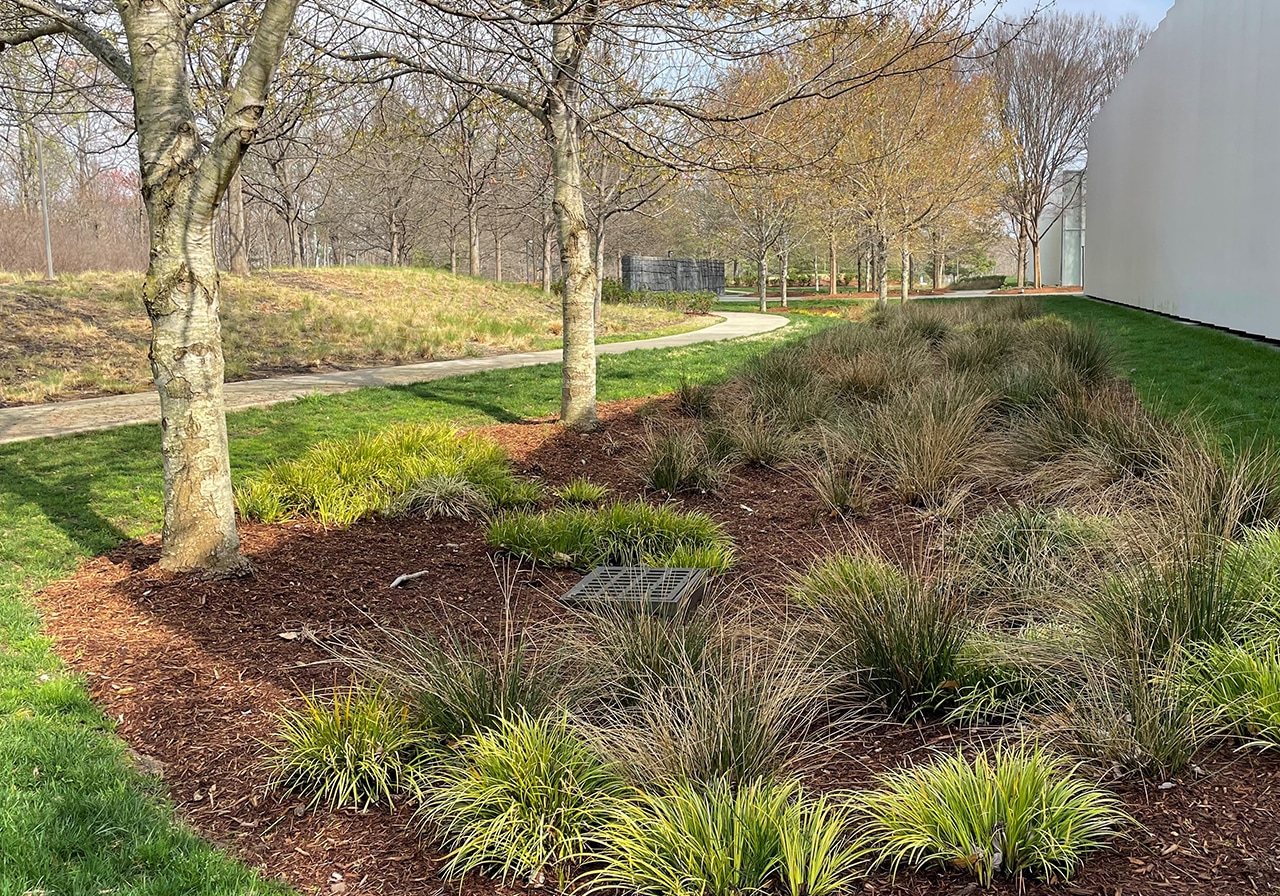Stormwater Management
[[translate(episode,'title')]]
[[translate(episode,'audioCredit') || translate(episode,'credit')]][[translate(episode,'title')]]
[[translate(episode,'audioCredit') || translate(episode,'credit')]]Audio Transcript
The pond at the NCMA’s Ann and Jim Goodnight Museum Park is a lovely place to stroll and see native plants and wildlife. But did you know it’s also a pivotal part of the Museum’s sustainability mission?
During the construction of West Building, an intricate stormwater management system was incorporated to collect roof water, surface runoff from parking lots, and condensation from HVAC units on the north side of West Building. All of this stormwater runoff is collected in a 90,000-gallon underground cistern.
By capturing and storing this stormwater, the Museum can reduce the amount of potable water needed to care for landscapes in the Park. Potable water is drinkable water that’s been treated at Raleigh’s water treatment plant. So not only is the Museum saving on water costs but it is also reducing the number of city resources used for maintaining the landscape. This is especially helpful during summer droughts. Potable water can become limited during a drought.
Another crucial aspect of this system is not only collecting and storing this water but also filtering and slowing its movement to prevent flooding downstream. As part of the NCMA’s stormwater management system, the existing stormwater elements at the pond were retrofitted to improve aesthetics and stormwater management. Stormwater runoff from the parking lots along Blue Ridge Road and excess water collected in the cistern are directed to the pond. Once near the pond, stormwater flows through swales, planted tiers, and wetlands that filter out sediment and other pollutants. Water from the pond then flows into House Creek. Slowing and filtering the influx of water during a storm event helps reduce erosion and improve water quality in the stream.
As part of a campus-wide effort to improve stormwater management, the Museum Park has also implemented a 1,000-foot-long water quality device as part of the expansion of Blue Ridge Road. This captures water from the parking areas and filters out pollutants. The water then flows through a dissipator made of rubble from the former prison boiler house before entering the Park’s stream system.
The Welcome Center located near the smokestack incorporates rain chains to collect roof runoff and pipe it to the dissipator. This slows the velocity of the water and prevents flooding and erosion in the stream system downhill from the Center.
All the elements in the stormwater treatment process for the Museum Park work together to trap pollutants, remove them, and reduce the velocity of water during storm events. These measures prevent flooding and erosion to improve the overall quality of water both in the Park and downstream for decades to come. The benefits of these stormwater management elements are present on-site but also provide benefits to wildlife and human health.
